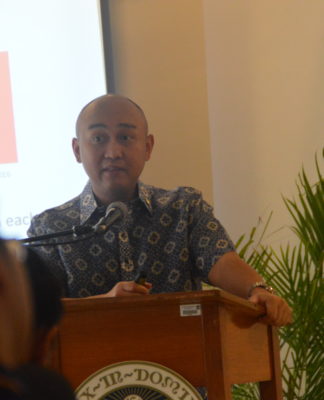 HOW MANY lives can you save by simply giving 450 milliliters of your blood in one sitting?
HOW MANY lives can you save by simply giving 450 milliliters of your blood in one sitting?
When a person volunteers to donate his blood, he is subjected to a series of screenings to ensure that he is in good physical condition. This is determined by checking if he has the normal body weight (above 50 kilograms), pulse rate (60 to 100 beats per minute), and blood pressure, among many other criteria. Laboratory tests are also performed to ensure that the donor is free from blood-transmissible diseases such as malaria, hepatitis B and C, syphilis, and acquired immunodeficiency syndrome (Aids). Once declared to be in good health, the donor will be cleared to undergo the blood collection process known as “bleeding.”
After the bleeding process, the blood collected will be separated into its different components, which can then be transfused into patients.
According to the book Modern Blood Banking and Transfusion Practices by Denise Harmening, whole blood may be subjected to “light” spin wherein it undergoes centrifugation, a process that employs centrifugal force to separate components. “Light” spin has the blood spinning at 3,200 revolutions per minute for two to three minutes to yield platelet-rich plasma and packed red blood cells. Separation and storage of the packed red cell at one to six degrees Celcius provides a stored component that will restore oxygen-carrying capacity in symptomatic anemia.
Platelet-rich plasma will then be subjected to “heavy” spin by recentrifugation at 22 degrees Celsius and 3,600 revolutions per minute for five minutes. This will separate the platelets from the plasma. Platelets stored at 20 to 24 degrees Celcius up to five days may be transfused into patients with Dengue fever, bleeding, and disseminated intravascular coagulopathy, while plasma stored at negative 18 degrees Celcius as fresh frozen plasma may be transfused into patients with coagulation deficiencies, liver diseases, and disseminated intravascular coagulopathy, a disease characterized by blood clotting within the blood vessels and hemorrhage.
Fresh frozen plasma can also yield cryoprecipitate, another blood component that can be transfused into patients with Hemophilia A, von Willebrand’s disease, and hypofibrinogenemia— all diseases of deficiencies in coagulation factors. Cryoprecipitate may be harvested by thawing the fresh frozen plasma and subjecting it to a heavy spin for four degrees Celsius.
While the Department of Health’s National Voluntary Blood Services Program reports that almost 85 percent of donated blood come from voluntary donors, there is still a need for more.
According to the Philippine National Red Cross, demand for donated blood will become more pressing as more dengue fever cases are expected to occur during the rainy season.
As Sen. Richard Gordon, Red Cross chairman says nine out of 10 Filipinos need blood at some point in their lives. And since the risk of contracting blood-borne diseases seems to be increasing, there is a greater demand for safe blood.
In exchange for the life-saving benefits a dying patient will gain from donated blood, donors can promote their own health by their volunteerism. Dr. Kristie Leong wrote in the Associated Press that blood donation helps decrease the risk of iron accumulation in the body since it is one of the components of red blood cells. Excessive amounts of iron in the body can promote formation of free radicals in the body which may disrupt normal cell function and increase the risk of chronic diseases such as heart disease and cancer. The World Health Organization, meanwhile, states that for patients of hemochromatosis, a genetic disease characterized by accumulation of too much iron in the body; and polycythemia vera, a disease characterized by increased red blood cell mass due to uncontrolled production, regular blood donation serves as a life-saving treatment.
On a more personal note, however, nothing beats the feeling of knowing that at this very moment, someone out there is able to live a second life because a part of me is circulating in the person’s body.














